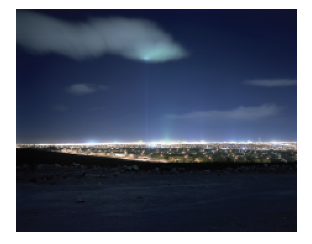1.
One summer, when sixteen-year-old Levi Presley jumped from the observation deck of the 1,149-foot-high tower of the Stratosphere Hotel in Las Vegas, the local city council was considering a bill that would temporarily ban lap dancing in the city’s strip clubs, archaeologists unearthed shards of the world’s oldest bottle of Tabasco brand sauce from beneath a parking lot, and a woman from Mississippi beat a chicken named Ginger in a thirty-five-minute-long game of tic-tac-toe.
On the day that Levi Presley died, five others died from two types of cancer, four from heart attacks, three because of strokes.
It was a day of two suicides by gunshot as well.
The day another suicide from falling, too.
At a record 113 degrees, it also happened to be one of that summer’s hottest days—a day that caused the World’s Tallest Thermometer to break, raised the price of bottled water to five dollars for eight ounces, and caused a traffic jam on the north end of the Las Vegas Strip as a tourist family traveled toward downtown Las Vegas, rolled over a broken bottle from a homeless woman’s cart, blew out a back tire, hit a parked car, and stalled outside the entrance of the Stratosphere Hotel when the jack inside the back of their rented Dodge Stratus sank into the heat-softened asphalt of the street.
We therefore know that when Levi Presley jumped from the tower of the Stratosphere Hotel at 6:01:43 p.m.—eventually hitting the ground at 6:01:52 p.m.—there were over a hundred tourists in five dozen cars that were honking and bumping and idling and yelling at the base of the Stratosphere tower.
Some of them looked up from the traffic jam that night and briefly saw in the sky something fall from the dark, and then through the palms, and then to the city’s pavement. Some of them left their cars to look down at what had fallen. And six of them gave statements of what they saw to the police.
When I asked the Las Vegas Metropolitan Police Department whether I could read some of those statements that the witnesses had given, Police Sergeant Steve Barela explained, “You don’t want to read any of that, man. That stuff is just facts. None of this is gonna sound like a Mickey Spillane novel. You know?”
When I asked a woman at Las Vegas Teen Crisis whether suicide is a problem for teenagers in the city, she told me that she preferred I “not write any of that down.”
When I asked Michael Gilmartin, the public relations manager at...
You have reached your article limit
Sign up for a digital subscription and continue reading all new issues, plus our entire archives, for just $1.50/month.
Already a subscriber? Sign in





